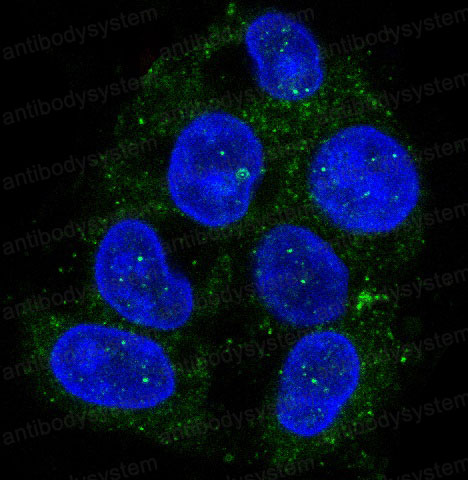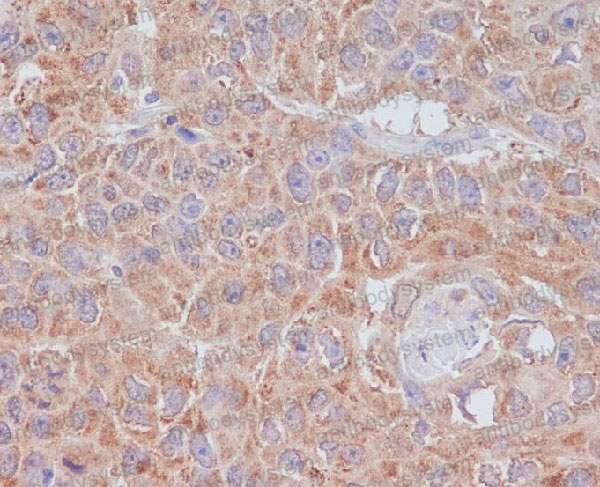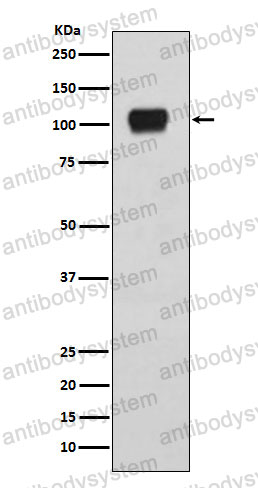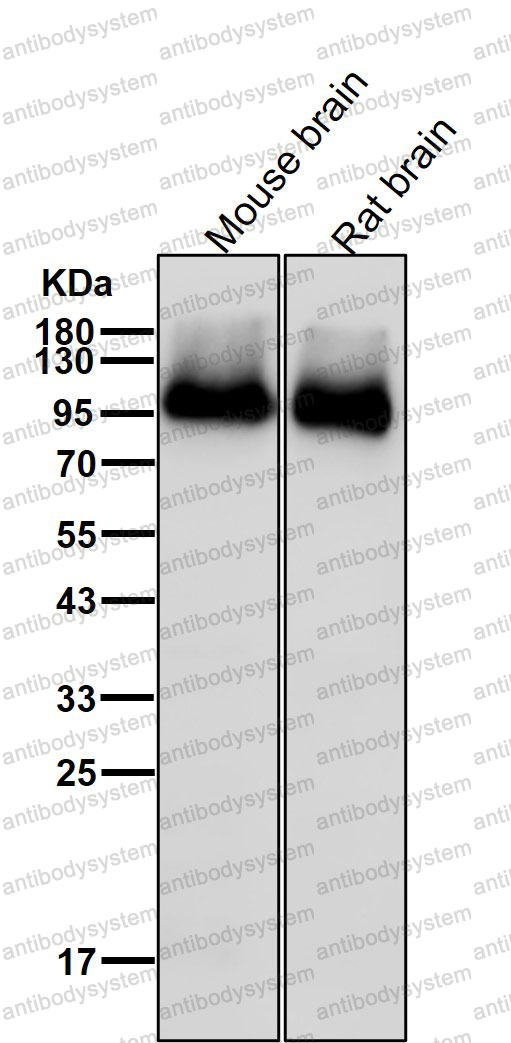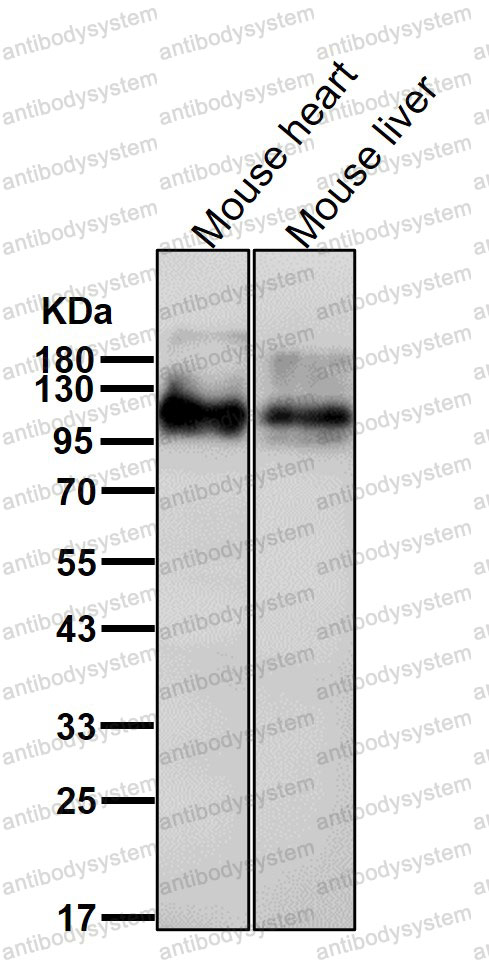Catalog No.
RHN60801
Species reactivity
Human, Mouse, Rat
Host species
Rabbit
Isotype
IgG
Clonality
Monoclonal
Tested applications
IF: 1:50-1:200, IHC: 1:100-1:200, IP: 1:20-1:50, WB: 1:1000-1:2000
Target
APG9-like 1, mATG9, APG9L1, Autophagy-related protein 9A, ATG9A
Concentration
1 mg/ml
Endotoxin level
Please contact with the lab for this information.
Purity
>95% by SDS-PAGE.
Purification
Protein A/G purified from cell culture supernatant.
Accession
Q7Z3C6
Applications
IF, IHC, IP, WB
Form
Liquid
Storage buffer
0.01M PBS, pH 7.4, 0.05% BSA, 50% Glycerol, 0.05% Sodium azide.
Stability and Storage
Use a manual defrost freezer and avoid repeated freeze thaw cycles. Store at 4 ℃ for frequent use. Store at -20 ℃ for twelve months from the date of receipt.
Clone ID
R2P10
Identification of a Proteomic Signature for Predicting Immunotherapy Response in Patients With Metastatic Non-Small Cell Lung Cancer., PMID:39216661
Fasting-Mimicking Diet Inhibits Autophagy and Synergizes with Chemotherapy to Promote T-Cell-Dependent Leukemia-Free Survival., PMID:38136414
S100a9 inhibits Atg9a transcription and participates in suppression of autophagy in cardiomyocytes induced by β1-adrenoceptor autoantibodies., PMID:37723445
HSF4 Transcriptionally Activates Autophagy by Regulating ATG9a During Lens Terminal Differentiation., PMID:37266953
BNIP3L-mediated mitophagy is required for mitochondrial remodeling during the differentiation of optic nerve oligodendrocytes., PMID:33404293
Integrating Genetic and Genomic Analyses of Combined Health Data Across Ecotypes to Improve Disease Resistance in Indigenous African Chickens., PMID:33193617
An inverted CAV1 (caveolin 1) topology defines novel autophagy-dependent exosome secretion from prostate cancer cells., PMID:32897127
The HIF target ATG9A is essential for epithelial barrier function and tight junction biogenesis., PMID:32726170
Sequential formation of different layers of dystrophic neurites in Alzheimer's brains., PMID:30899091
Regulation of hypoxia-induced autophagy in glioblastoma involves ATG9A., PMID:28797031
Quantifying Autophagic Structures in Mammalian Cells Using Confocal Microscopy., PMID:28253957
ATG9A loss confers resistance to trastuzumab via c-Cbl mediated Her2 degradation., PMID:27050377
ATG9A overexpression is associated with disease recurrence and poor survival in patients with oral squamous cell carcinoma., PMID:24085552
Atg9A protein, an autophagy-related membrane protein, is localized in the neurons of mouse brains., PMID:20124090

